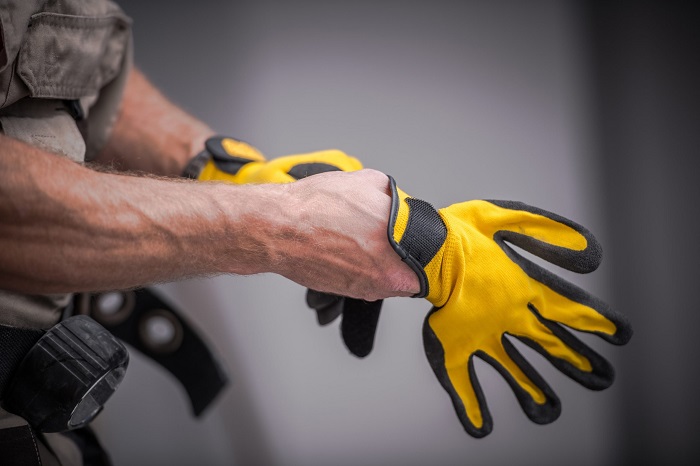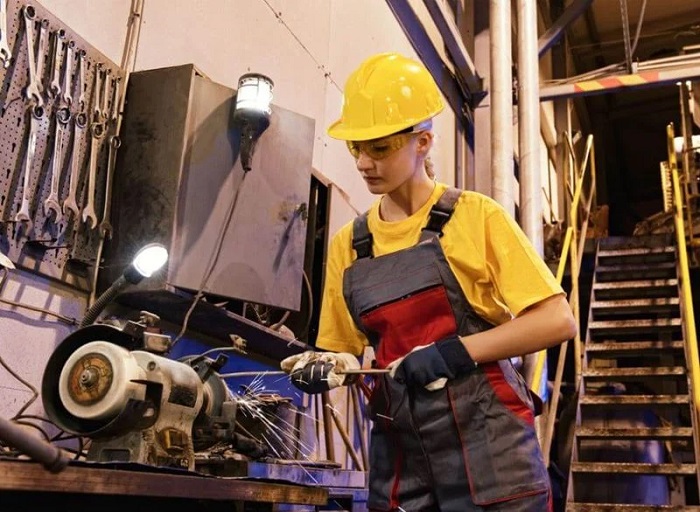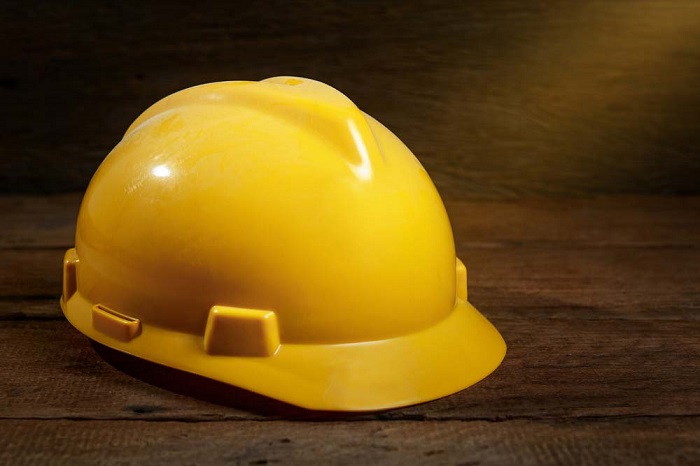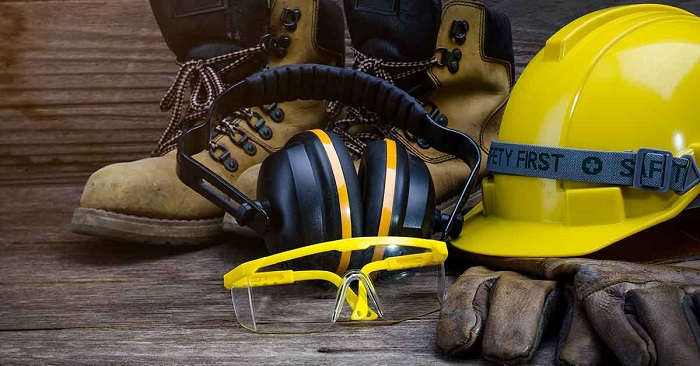PPE stands for Personal Protective Equipment. It refers to specialized equipment or clothing designed to protect individuals from potential hazards or risks in their work environment. It includes items such as helmets, gloves, safety glasses, respirators, high-visibility vests, and protective clothing.
The purpose of PPE is to minimize exposure to various workplace hazards, including physical, chemical, biological, or ergonomic risks, and ensure the safety and well-being of workers. That is why it’s crucial to follow certain steps and consider several factors to carefully select the right equipment.
Types of PPE
Hand and Arm Protection

This type of equipment aims to protect the hands and arms from different kinds of hazards, including chemical exposure, cuts, burns, blisters, and other risks. The most common PPE for hand and arm protection are gloves, armlets, gauntlets, mitts, and wrist cuffs.
Gloves prevent contact with harmful substances, enhance grip and control, and offer thermal protection. They also contribute to hygiene and infection control by reducing cross-contamination risks. Depending on the workplace hazards you need to acquire durable working gloves that effectively protect workers’ hands in various environments.
In addition, it’s important to note that they can degrade over time, especially with frequent use, which reduces their effectiveness. That said, it’s crucial to regularly inspect them for signs of tear or damage to know when a replacement is needed. Some examples of safety gloves include anti-vibration, cotton working gloves, cut-resistant, fingerless, mesh gloves and more.
Armlets, also known as arm sleeves, cover the forearm and provide additional protection to the arm. Their purpose is to protect the arms in activities where there is a risk of cuts, abrasions, impact, or other injuries. Make sure you purchase armlets that are made from durable materials such as Kevlar, cut-resistant fabrics, or impact-resistant materials.
Gauntlets are protective gloves that extend beyond the wrist and cover a portion of the forearm. They provide enhanced protection to the hands, wrists, and lower arms from cuts, punctures, chemicals, heat, or impact.
Mitts or mittens are typically made of warm materials such as wool, fleece, or synthetic fabrics. Their purpose is to provide warmth and protection to the hands in cold weather conditions. When selecting mitts, it’s important to consider factors such as insulation, water resistance, breathability, and fit.
Eye And Face Protection

Eyewear equipment is designed to shield the eyes and face from potential hazards such as flying particles, liquid chemicals, harmful substances, and radiation. The most common PPE for eyes and face include safety glasses, goggles, face shields and visors.
Safety glasses provide essential eye protection against impact, flying debris, and particles. They can protect the eyes from objects heading straight to the face, but not from dust. Safety goggles, on the other hand, offer better eye protection from all angles.
Face shields or visors cover the entire face, including the eyes, nose, and mouth. They provide a barrier against hazards such as chemical splashes, flying objects, and heat. Face shields are often used together with safety glasses or goggles for added protection.
Body Protection

Protecting the body can be done with the help of protective clothing such as vests, coveralls, aprons, surgical gowns, or full-body suits. Also, high-visibility clothing, often in the form of vests or jackets, incorporates reflective materials or bright colours to enhance visibility in low-light or high-risk environments.
Another type of body protective gear is clothing for hot, cold, or bad weather. For example, flame-resistant clothing is specifically designed to protect against thermal hazards such as flames whereas heat-resistant clothing is made from materials that can withstand high temperatures.
Hearing Protection

Prolonged exposure to loud noise can lead to hearing loss and other hearing-related health issues. As a result, hearing protection equipment is essential. It comes in the form of earplugs, earmuffs, noise-cancelling devices, and canal caps.
All of these offer different types of hearing protection. For instance, earplugs are portable, cost-effective, and offer a snug fit in the ear canal. They provide convenience and discretion. Earmuffs are easy to use, allow a consistent level of protection, and are easily adjustable. Moreover, noise-cancelling devices actively reduce or cancel out noise using technology, but they are the most expensive option of all.
Respiratory Protection
This protective gear is used to shield workers against the inhalation of hazardous substances that may be present in the air. Commonly used types of respiratory protection are surgical masks, N-95 respirators, half-mask, and full-face respirators. It’s crucial to wear and select respiratory equipment appropriately.
Head Protection

Head protection is a critical aspect of PPE that aims to protect workers’ heads and upper bodies from injuries. There are two widely used types of head protection equipment – industrial safety helmets and bump hats.
Industrial helmets are specifically designed to provide protection against falling objects, impact, and penetration hazards. Whereas bump hats offer protection against minor bumps, scrapes, and cuts. Unlike industrial safety helmets, bump caps have a softer shell made of materials like foam, plastic, or fabric and aren’t meant for protecting the head from falling objects.
Steps to Consider When Choosing PPE

- Identify Hazards: Conduct a thorough assessment of the work environment to identify potential hazards. This may include physical, chemical, biological, or ergonomic hazards.
- Determine PPE Requirements: Based on the identified hazards, determine the specific PPE requirements for each task or job. Consider the body parts that need protection and the type of threats involved.
- Research Appropriate PPE: Research and gather information on the types of PPE available that can effectively protect against the identified hazards. Consider the industry standards, regulations, and recommendations.
- Assess Compatibility: Ensure that the chosen PPE is compatible with other equipment or clothing that workers may be required to wear. For example, if workers need to wear a respirator and safety glasses simultaneously, ensure that they can be comfortably worn together.
- Evaluate Comfort and Fit: PPE should be comfortable to wear to encourage proper and consistent usage. Consider factors such as size, adjustability, weight, and ventilation to ensure a good fit and minimize discomfort.
- Check Durability and Quality: Assess the durability and quality of the PPE. Look for products that meet recognized standards and have a track record of reliability. Ensure that the materials and construction are suitable for the intended use.
- Provide Training: Ensure that workers receive proper training on how to use, wear, maintain, and dispose of the selected equipment correctly.
- Regularly Review and Update: Periodically review and update PPE selection to account for changes in the work environment, tasks, or regulations. Stay informed about advancements in PPE technology and reassess the effectiveness of existing PPE.
Conclusion
In conclusion, choosing the proper PPE for workers is crucial for health and safety reasons. Every workplace must be safe and depending on the industry you need to make some vital decisions in selecting the equipment that will serve the workers and ensure their wellbeing. Whatever protective gear you purchase make sure it’s durable, compatible, comfortable, and properly used. Doing so will create a positive, safe, and motivating work environment.











